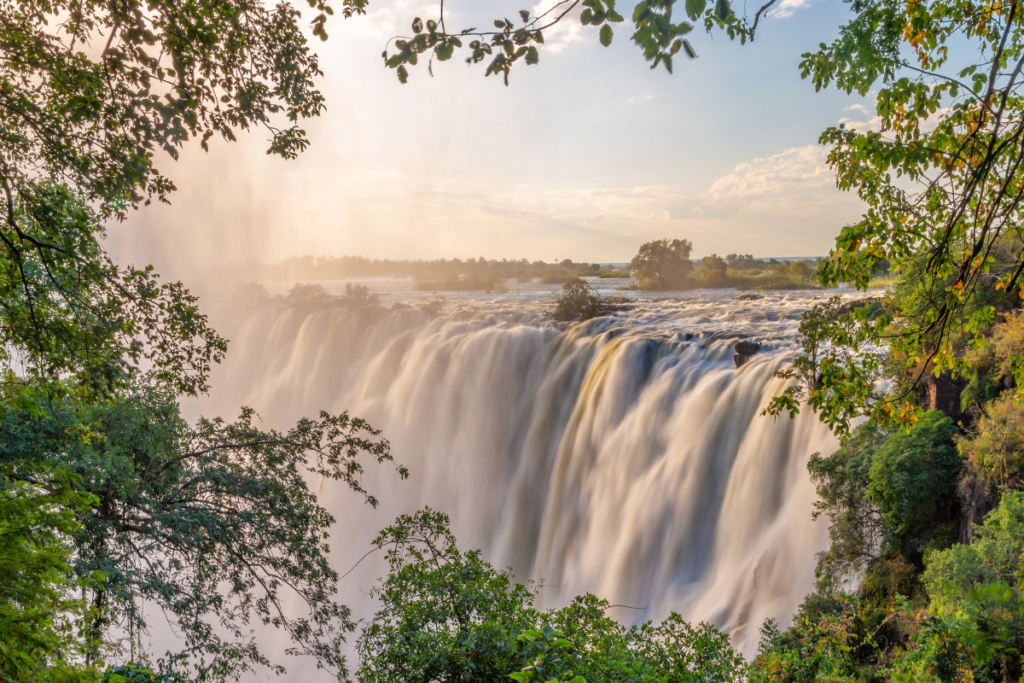
Number 25. Victoria Falls.
Straddling the border between Zambia and Zimbabwe, Victoria Falls is not just a natural wonder but a geological masterpiece. With a width of over 1,700 meters and a height of 108 meters, it forms the largest curtain of falling water in the world. The local name, Mosi-oa-Tunya, meaning “The Smoke That Thunders,” aptly describes the plume of mist and the thunderous sound of the water that can be heard from miles away. The falls are a part of two national parks, Mosi-oa-Tunya National Park in Zambia and Victoria Falls National Park in Zimbabwe, offering visitors a chance to experience the majesty of the falls from different perspectives. Whether viewed from the Knife-edge Bridge, the Devil’s Pool, or a helicopter above, Victoria Falls remains one of the most breathtaking sights on the planet. The surrounding rainforest, sustained by the spray from the falls, is home to a diverse range of flora and fauna, adding to the allure of this magnificent natural spectacle.

Number 24. Great Barrier Reef.
The Great Barrier Reef, off the coast of Queensland, Australia, is the world’s largest coral reef system and one of the most diverse ecosystems on the planet. Spanning over 2,300 kilometers and comprising over 2,900 individual reefs and 900 islands, this marine wonderland is visible from space. The reef is a kaleidoscope of colorful coral, teeming with a myriad of marine life including thousands of species of fish, sharks, turtles, and an abundance of other sea creatures. It’s a snorkeler’s and diver’s paradise, offering an unparalleled underwater experience where one can swim alongside the vibrant inhabitants of this underwater city. The reef is not only a natural treasure but also a vital part of the marine environment, playing a crucial role in the health of our oceans. Despite its beauty and ecological importance, the Great Barrier Reef faces threats from climate change, pollution, and overfishing. Efforts to preserve and protect this natural wonder are ongoing, ensuring that future generations can continue to marvel at its beauty and biodiversity.

Number 23. Serengeti Migration.
The Serengeti Migration is a breathtaking spectacle of nature that unfolds in the vast plains of the Serengeti National Park in Tanzania. Each year, over a million wildebeest, along with hundreds of thousands of zebras and gazelles, embark on a 300-mile journey in search of fresh grazing lands and water. This annual migration is driven by the seasonal rains, with the herds moving in a clockwise direction through the Serengeti and into the adjacent Masai Mara Reserve in Kenya. The sight of these massive herds on the move is awe-inspiring, with the landscape coming alive with the thundering hooves and dust clouds. Along the way, the animals face numerous challenges, including crossing crocodile-infested rivers and evading predators like lions, leopards, and hyenas. The Serengeti Migration is not only a vital ecological event but also a powerful symbol of the resilience and interconnectedness of life on Earth. It’s a natural wonder that attracts wildlife enthusiasts and nature lovers from around the globe, eager to witness one of the most extraordinary displays of wildlife on the planet.

Number 22. Amazon Rainforest.
The Amazon Rainforest, often referred to as the “lungs of the Earth,” is an immense tropical rainforest that covers over 5.5 million square kilometers across nine South American countries. This vast green expanse is home to an astonishing diversity of life, with millions of species of plants, animals, and insects, many of which are found nowhere else on the planet. The Amazon is a vital component of the global climate system, playing a crucial role in regulating weather patterns and carbon dioxide levels. The dense canopy of the rainforest, interwoven with winding rivers and streams, creates a unique and complex ecosystem that supports an array of indigenous cultures and communities. Exploring the Amazon is an adventure into the heart of biodiversity, where each step reveals new wonders, from the towering kapok trees to the elusive jaguars. However, this natural paradise faces threats from deforestation, mining, and agriculture, making conservation efforts critical to preserving its beauty and ecological importance for future generations.
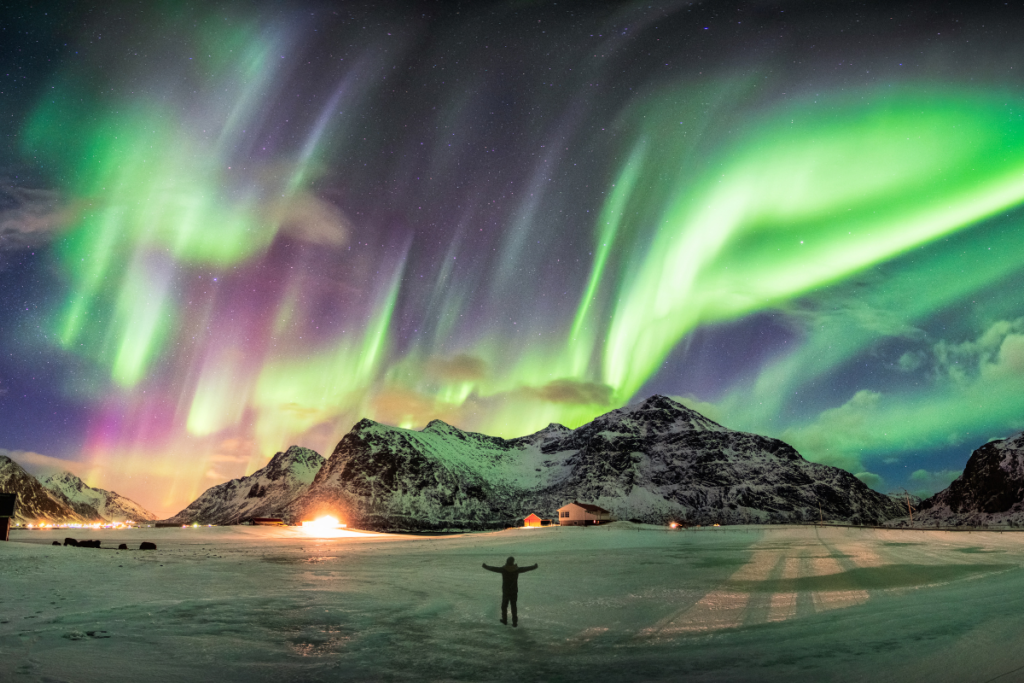
Number 21. Aurora Borealis.
The Aurora Borealis, also known as the Northern Lights, is a mesmerizing natural light show that illuminates the night sky in the polar regions. This celestial spectacle is caused by the interaction of charged particles from the sun with the Earth’s magnetic field and atmosphere. The result is a dazzling display of colors, ranging from green and pink to violet and red, that dance across the sky in swirling patterns. The best time to witness the Aurora Borealis is during the winter months when the nights are longest, and the skies are darkest. Locations such as Iceland, Norway, Canada, and Alaska offer prime viewing spots, where the lights can often be seen shimmering over snow-covered landscapes and reflected in icy waters. The experience of watching the Northern Lights is truly magical, evoking a sense of wonder and awe at the beauty and mystery of the natural world. It’s a reminder of the planet’s incredible phenomena and a must-see for anyone seeking a unique and unforgettable adventure.
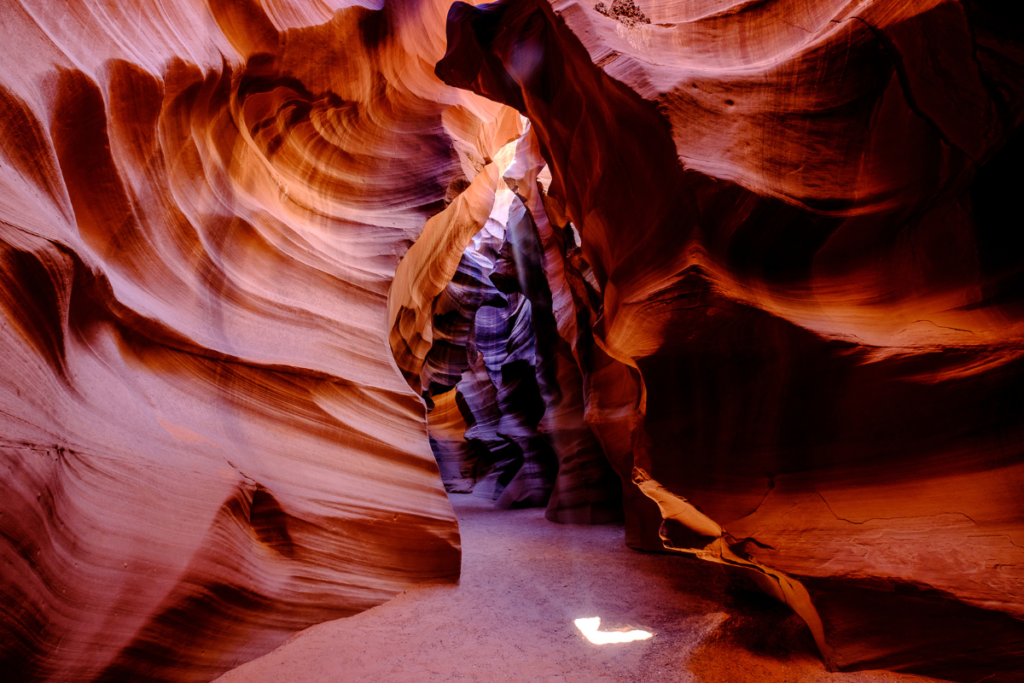
Number 20. Antelope Canyon.
Antelope Canyon, located in the American Southwest on Navajo land near Page, Arizona, is a slot canyon renowned for its wave-like structure and the light beams that shine down into the openings of the canyon, creating a surreal and ethereal atmosphere. The canyon is divided into two separate sections, Upper Antelope Canyon (also known as “The Crack”) and Lower Antelope Canyon (“The Corkscrew”). The narrow, winding passageways of Antelope Canyon were formed over millions of years by the erosion of the sandstone due to flash flooding and wind. The smooth, flowing lines of the canyon walls, along with the play of light and shadow, make it a photographer’s paradise. To visit Antelope Canyon, one must book a guided tour with a Navajo guide, as the canyon is a sacred site for the Navajo people and is protected as part of the Navajo Nation Park. The experience of walking through this natural wonder is like stepping into another world, where the beauty of nature’s artistry is on full display.
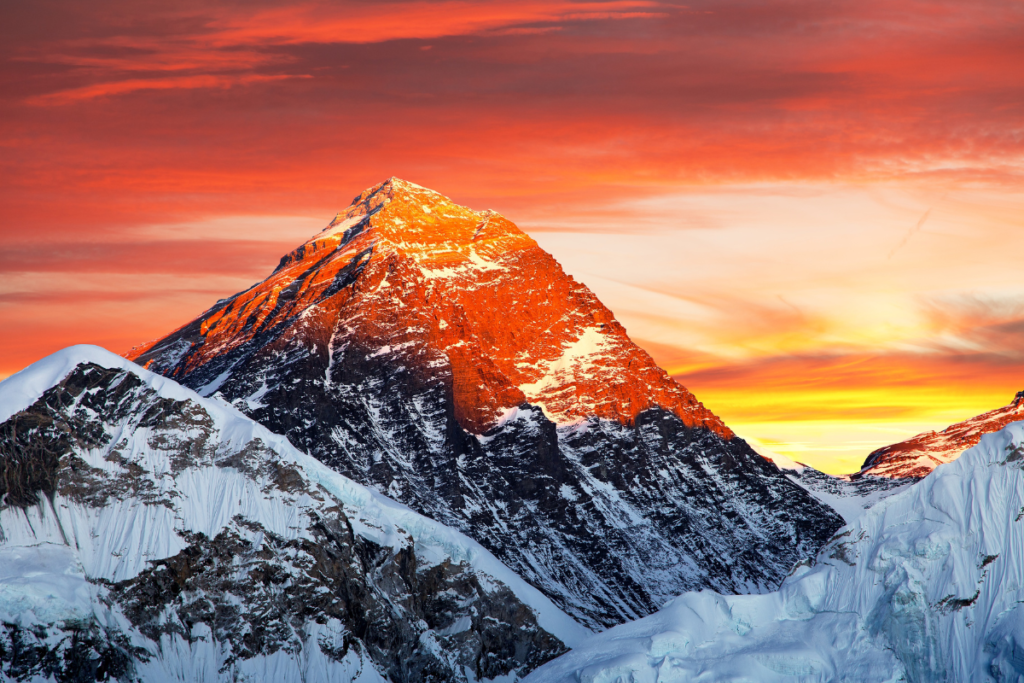
Number 19. Mount Everest.
Mount Everest, known as Sagarmatha in Nepali and Chomolungma in Tibetan, stands as the highest peak on Earth, reaching an astonishing height of 8,848 meters (29,029 feet) above sea level. Situated in the Himalayas on the border between Nepal and the autonomous region of Tibet, China, Everest is more than just a mountain; it’s a symbol of human ambition and the ultimate challenge for mountaineers. The journey to its summit is fraught with peril, including extreme weather conditions, avalanches, and the risks associated with high altitude, such as acute mountain sickness. Despite these dangers, climbers from all over the world are drawn to Everest, seeking to stand on top of the world and experience the unparalleled views that stretch across the roof of the world. The mountain also holds deep cultural and spiritual significance for the local Sherpa community, who are renowned for their mountaineering skills and play a crucial role in supporting expeditions. Climbing Mount Everest is a testament to human endurance and the relentless pursuit of adventure.
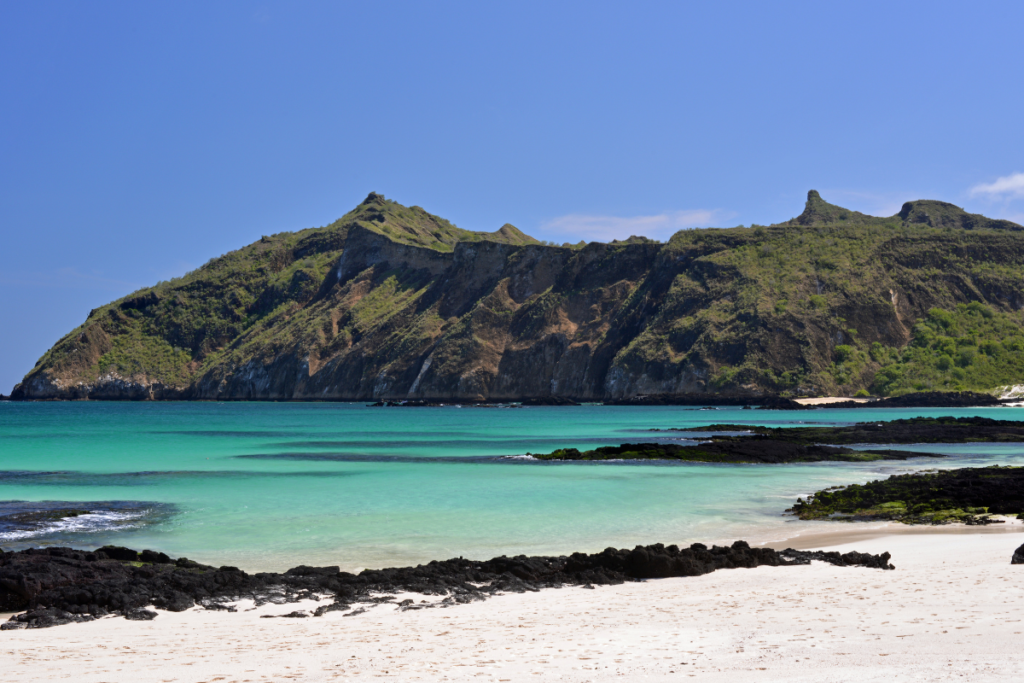
Number 18. Galápagos Islands.
The Galápagos Islands, an archipelago of volcanic islands located about 1,000 kilometers west of Ecuador in the Pacific Ocean, are a living museum of evolution. This unique ecosystem is home to an extraordinary array of wildlife, much of which is found nowhere else on Earth. The islands gained fame through Charles Darwin’s studies, which contributed to the development of his theory of natural selection. Among the most notable residents are the giant Galápagos tortoises, marine iguanas, and the diverse array of finches. The islands’ isolation has allowed species to evolve in relative seclusion, resulting in fascinating adaptations. The Galápagos National Park and the Galápagos Marine Reserve work to protect this precious biodiversity, ensuring that visitors can observe these natural wonders while minimizing their ecological impact. Exploring the Galápagos is an unparalleled experience, offering a glimpse into the raw and untouched beauty of the natural world, where animals live without fear of humans.

Number 17. Salar de Uyuni.
Salar de Uyuni, located in the high plains of southwestern Bolivia, is the world’s largest salt flat, covering over 10,000 square kilometers. This vast, otherworldly landscape is the result of prehistoric lakes that evaporated long ago, leaving behind a thick crust of salt and a layer of brine rich in lithium. During the rainy season, the salt flat transforms into a giant mirror, reflecting the sky in a surreal and breathtaking spectacle. Visitors can explore this unique terrain, dotted with cactus-studded islands and fringed by colorful lagoons inhabited by flamingos. The surreal beauty of Salar de Uyuni has made it a popular destination for adventurers and photographers seeking to capture its ethereal charm. The salt flat is also a critical habitat for several species of flamingos, adding a touch of life to the otherwise stark landscape. A journey to Salar de Uyuni is an unforgettable experience, offering a glimpse into a landscape that seems more like a dream than reality.
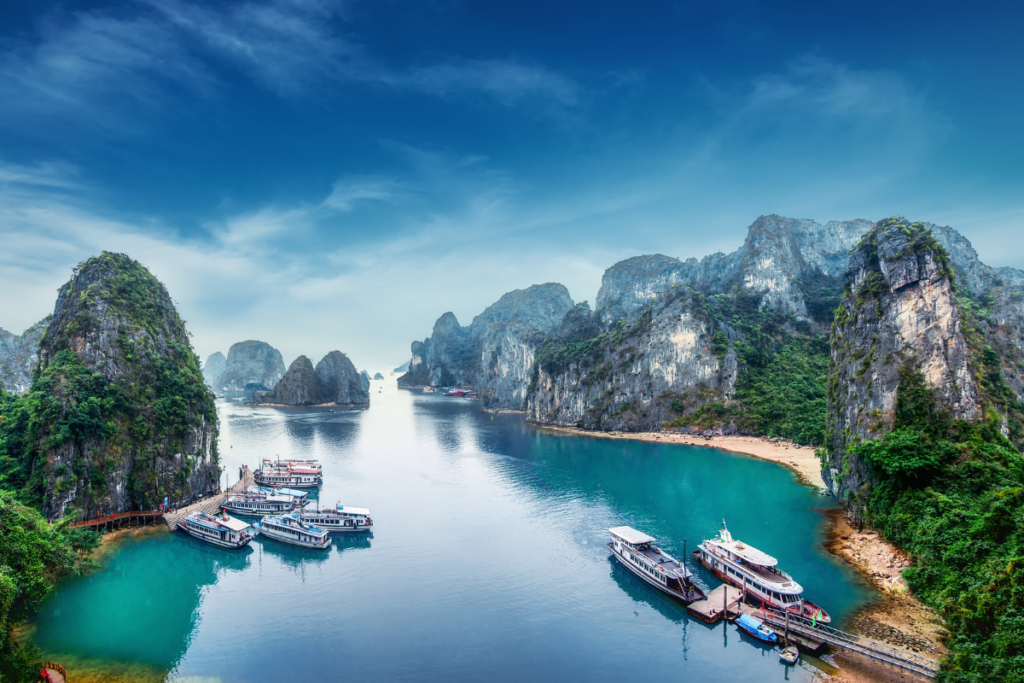
Number 16. Ha Long Bay.
Located in northeastern Vietnam, is a UNESCO World Heritage Site and a natural wonder known for its emerald waters and thousands of towering limestone islands topped with rainforests. The name Ha Long translates to “Descending Dragon,” a reference to the ancient legend that dragons descended from heaven to protect Vietnam from invaders, creating the bay’s unique landscape with their thrashing tails. The bay is dotted with caves, grottoes, and floating villages, where visitors can explore the hidden beauty of this magical place. A cruise through Ha Long Bay offers a serene and captivating experience, with opportunities for kayaking, swimming, and cave exploration. The mist-shrouded peaks rising from the water create a mystical atmosphere that has inspired countless myths and legends. Ha Long Bay is not just a natural wonder; it’s a symbol of Vietnam’s natural beauty and a testament to the power of time and the elements in sculpting the Earth’s landscapes.
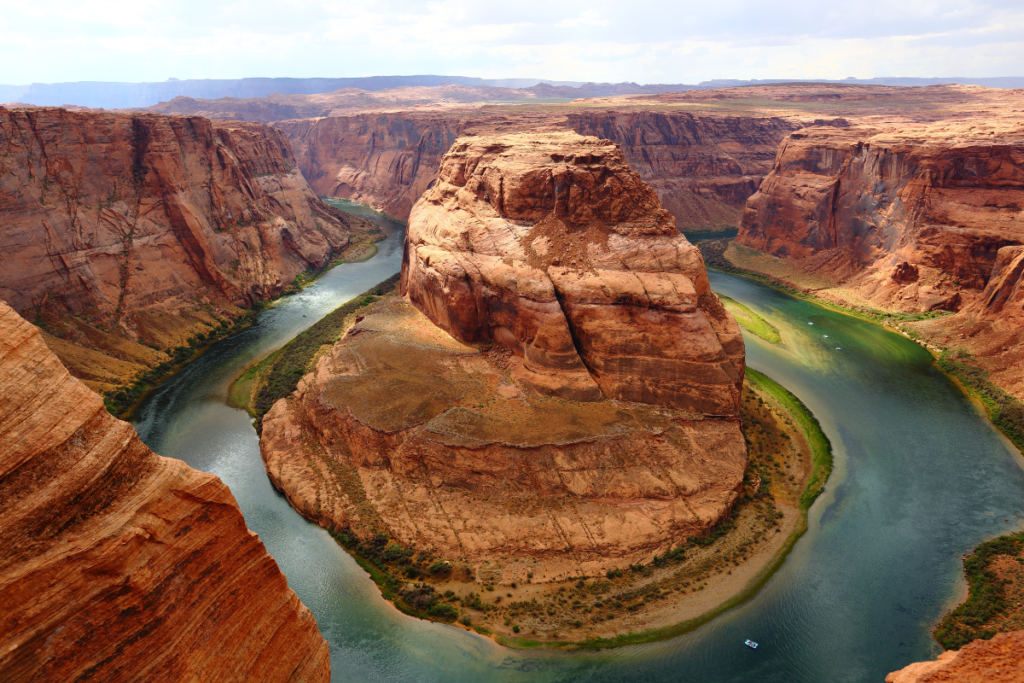
Number 15. Grand Canyon.
The Grand Canyon, one of the most iconic natural wonders in the United States, is a vast chasm carved over millions of years by the Colorado River. Located in Arizona, this UNESCO World Heritage Site stretches for over 277 miles, with depths reaching over a mile and widths of up to 18 miles. The canyon’s layered bands of red rock reveal the geological history of the North American continent, with each stratum telling a story of Earth’s past. The Grand Canyon is not only a geological marvel but also a place of immense beauty, with its ever-changing colors and shadows, diverse ecosystems, and stunning vistas. Hiking, rafting, and helicopter tours offer different perspectives to experience the canyon’s grandeur. The South Rim is the most accessible and popular area, while the North Rim provides a more secluded experience. The Grand Canyon is a testament to the power of natural forces and a reminder of the awe-inspiring beauty of our planet.
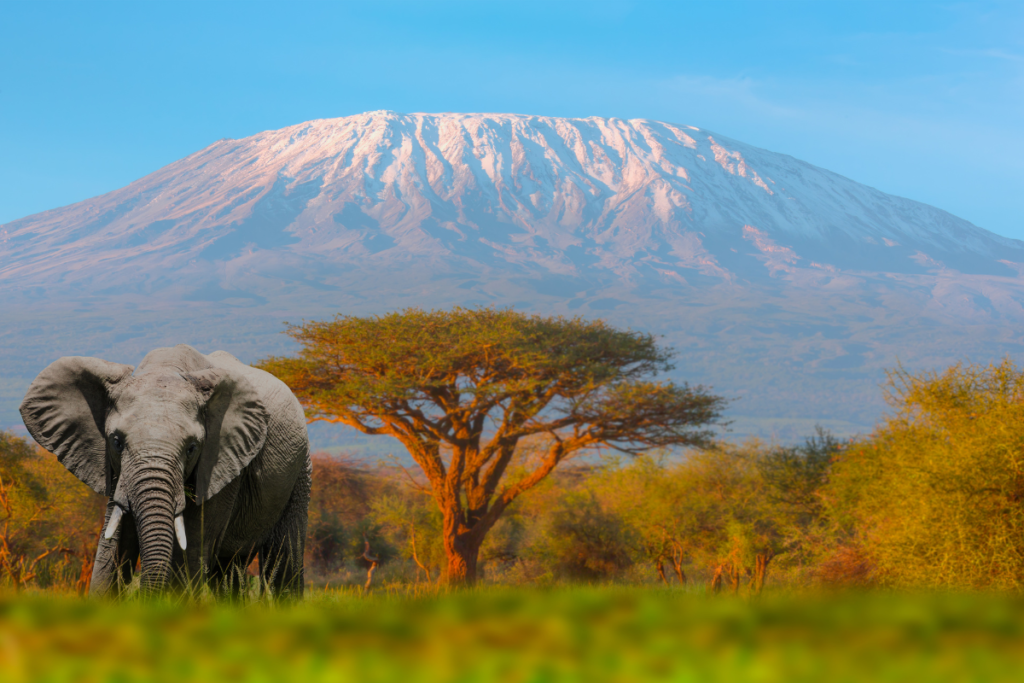
Number 14. Mount Kilimanjaro.
Mount Kilimanjaro, the highest peak in Africa, stands majestically in northeastern Tanzania, near the border with Kenya. Rising to an elevation of 5,895 meters (19,341 feet), Kilimanjaro is a dormant volcano and one of the world’s most accessible high summits, attracting climbers and adventurers from around the globe. The mountain is renowned for its snow-capped peak and diverse ecosystems, which range from lush rainforests at its base to alpine deserts and glaciers near the summit. Climbing Kilimanjaro is a challenging yet rewarding experience, offering breathtaking views and the chance to trek through different climatic zones in just a few days. The journey to the top, known as Uhuru Peak, is an opportunity to witness the stunning beauty of Africa and the resilience of the human spirit. Kilimanjaro is not just a mountain; it’s a symbol of perseverance and adventure that inspires those who dare to ascend its heights.
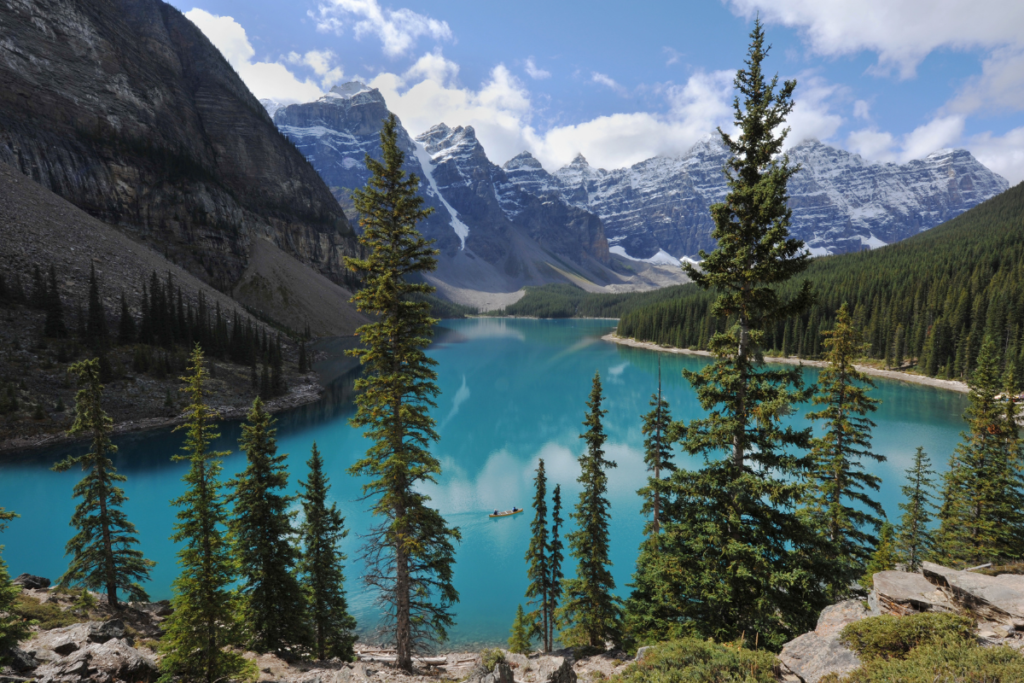
Number 13. Banff National Park.
Located in the Canadian Rockies of Alberta, Canada, is Canada’s oldest national park and a UNESCO World Heritage Site. This natural paradise is renowned for its stunning mountain landscapes, crystal-clear lakes, and diverse wildlife. The park is home to iconic sights such as Lake Louise, with its turquoise waters and glacier-clad peaks, and Moraine Lake, nestled in the Valley of the Ten Peaks. Visitors can explore a network of hiking trails, go skiing or snowboarding in the winter, and spot wildlife such as elk, grizzly bears, and mountain goats. The town of Banff, situated within the park, offers charming accommodations, restaurants, and cultural attractions. Banff National Park is a year-round destination that captivates with its breathtaking beauty and offers a range of outdoor activities for nature lovers and adventure seekers alike.

Number 12. Iguazu Falls.
Iguazu Falls, located on the border between Argentina and Brazil, is a magnificent natural wonder that surpasses even the famous Niagara Falls in its sheer scale and beauty. Comprising approximately 275 individual falls spread across a 3-kilometer-wide (1.9-mile-wide) arc, the falls create an awe-inspiring spectacle as they thunder down into the Iguazu River. The surrounding subtropical rainforest, part of the Iguazu National Park, is a UNESCO World Heritage Site and is teeming with diverse wildlife, including colorful toucans, capuchin monkeys, and jaguars. The most famous of the falls is the Devil’s Throat (Garganta del Diablo), a U-shaped chasm where half of the river’s flow plunges into a mist-filled abyss. Visitors can explore the falls from various vantage points, including walkways and observation decks on both the Argentine and Brazilian sides, and even take boat tours to get up close to the cascading water. Iguazu Falls is a breathtaking testament to the power and beauty of nature, leaving an indelible impression on all who witness its grandeur.

Number 11. Zhangjiajie National Forest Park.
Zhangjiajie National Forest Park, located in the Hunan province of China, is a stunning natural wonder known for its towering sandstone pillars, which are often shrouded in mist, creating a mystical and otherworldly landscape. This UNESCO World Heritage site served as the inspiration for the floating mountains in the movie “Avatar.” The park is part of the larger Wulingyuan Scenic Area and features breathtaking geological formations, including deep ravines, gorges, and natural bridges, as well as lush forests that are home to a variety of wildlife. The most famous attraction within the park is the Avatar Hallelujah Mountain, which was renamed after the film’s release. Visitors can explore the park via a network of hiking trails, cable cars, and the world’s longest outdoor escalator. Zhangjiajie National Forest Park is a testament to the awe-inspiring beauty of China’s natural landscape and a must-visit destination for nature lovers and adventure seekers.

Number 10. Yosemite National Park.
Yosemite National Park, located in the Sierra Nevada mountains of California, is an iconic American wilderness renowned for its breathtaking granite cliffs, towering waterfalls, and ancient sequoia trees. Covering an area of over 3,000 square kilometers, the park is a UNESCO World Heritage Site and a symbol of natural beauty and conservation. Yosemite’s most famous landmarks include El Capitan and Half Dome, massive rock formations that attract climbers from around the world. The park is also home to the majestic Yosemite Falls, one of the tallest waterfalls in North America. Visitors can explore the park’s diverse ecosystems through a network of hiking trails, ranging from easy walks to challenging backcountry adventures. Yosemite’s valleys, meadows, and forests provide habitat for a wide variety of wildlife, including black bears, deer, and numerous bird species. Whether you’re seeking outdoor adventure or simply want to marvel at the wonders of nature, Yosemite National Park offers an unforgettable experience in one of America’s most cherished landscapes.
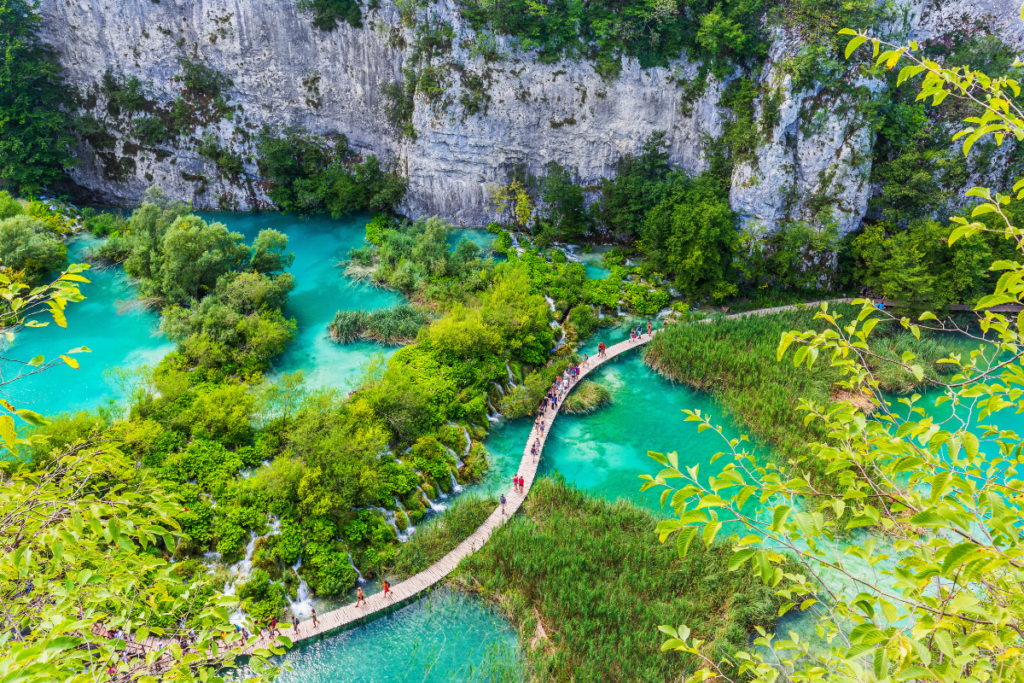
Number 9. Plitvice Lakes National Park.
Plitvice Lakes National Park, nestled in the heart of Croatia, is a breathtaking natural wonder known for its cascading lakes and stunning waterfalls. This UNESCO World Heritage site spans approximately 300 square kilometers of lush forested hills and features 16 terraced lakes, interconnected by a series of waterfalls and cascades. The waters of Plitvice are renowned for their distinctive colors, ranging from azure to green, grey, or blue, which change depending on the minerals in the water and the angle of sunlight. Wooden walkways and hiking trails wind around the lakes and waterfalls, allowing visitors to explore the park’s natural beauty up close. The park is also home to diverse flora and fauna, including bears, wolves, and many bird species, making it a haven for nature enthusiasts and wildlife photographers. Plitvice Lakes National Park is not only a masterpiece of natural beauty but also a testament to the importance of environmental preservation and the wonders that can be achieved through natural processes over millennia.
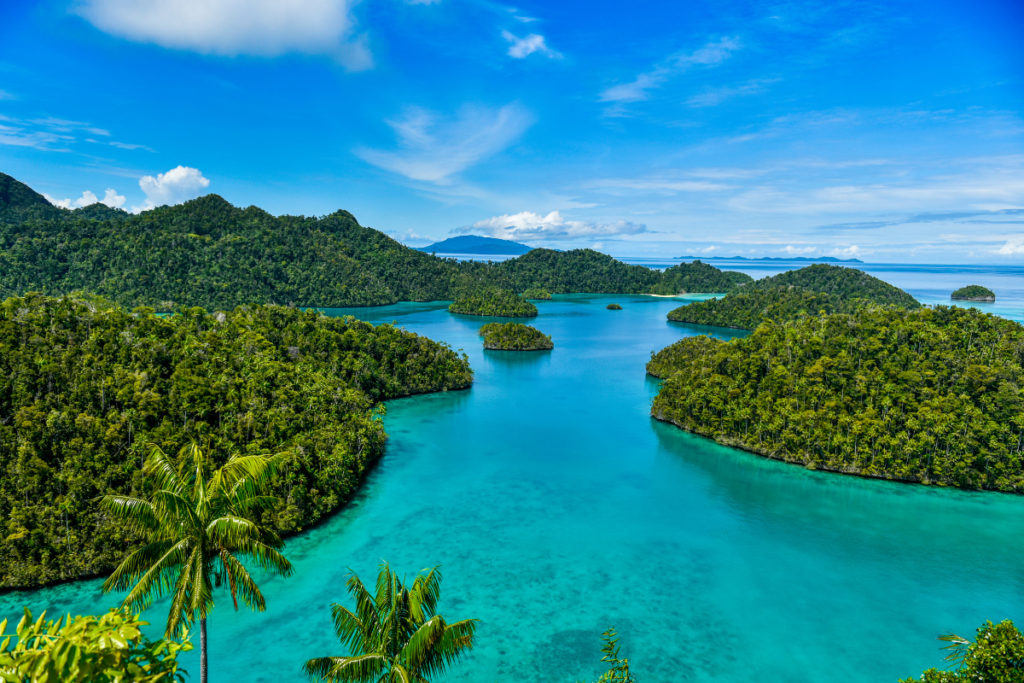
Number 8. Raja Ampat Islands.
The Raja Ampat Islands, located in the heart of the Coral Triangle in West Papua, Indonesia, are a pristine archipelago that is considered one of the most biodiverse marine habitats on Earth. Comprising over 1,500 small islands, cays, and shoals, Raja Ampat is a paradise for divers and snorkelers, with its crystal-clear waters, vibrant coral reefs, and abundant marine life, including manta rays, sharks, and a kaleidoscope of tropical fish. The islands are also known for their stunning above-water scenery, with lush jungles, white sandy beaches, and karst limestone formations. Raja Ampat’s remoteness has helped preserve its natural beauty and traditional culture, making it a sought-after destination for eco-tourists and adventure travelers. The region plays a crucial role in marine conservation and is part of the Bird’s Head Seascape, an area recognized for its efforts to protect the rich biodiversity of the Coral Triangle.
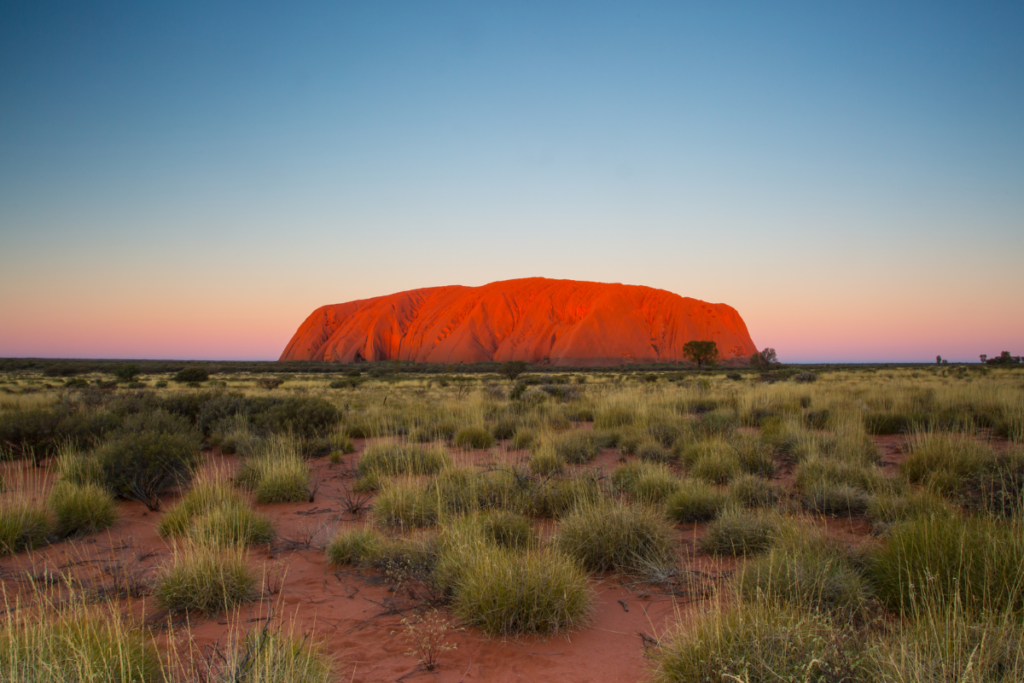
Number 7. Uluru (Ayers Rock).
Uluru, also known as Ayers Rock, is a massive sandstone monolith located in the heart of the Australian Outback, within the Uluru-Kata Tjuta National Park in the Northern Territory. Standing at a height of 348 meters (1,142 feet) and with a circumference of 9.4 kilometers (5.8 miles), Uluru is one of Australia’s most iconic natural landmarks. The rock is sacred to the Anangu, the indigenous people of the area, who have a deep spiritual connection to the land and its features. Uluru is renowned for its striking red color, which changes dramatically at different times of the day, especially at sunrise and sunset, when it glows in fiery hues. Visitors to Uluru can learn about the cultural significance of the site through guided tours and interpretive walks led by Aboriginal guides. The surrounding landscape is equally impressive, with its arid desert environment, unique flora and fauna, and nearby rock formations such as Kata Tjuta (The Olgas). Uluru is a symbol of Australia’s natural beauty and cultural heritage, attracting travelers from around the world to witness its majesty and significance.
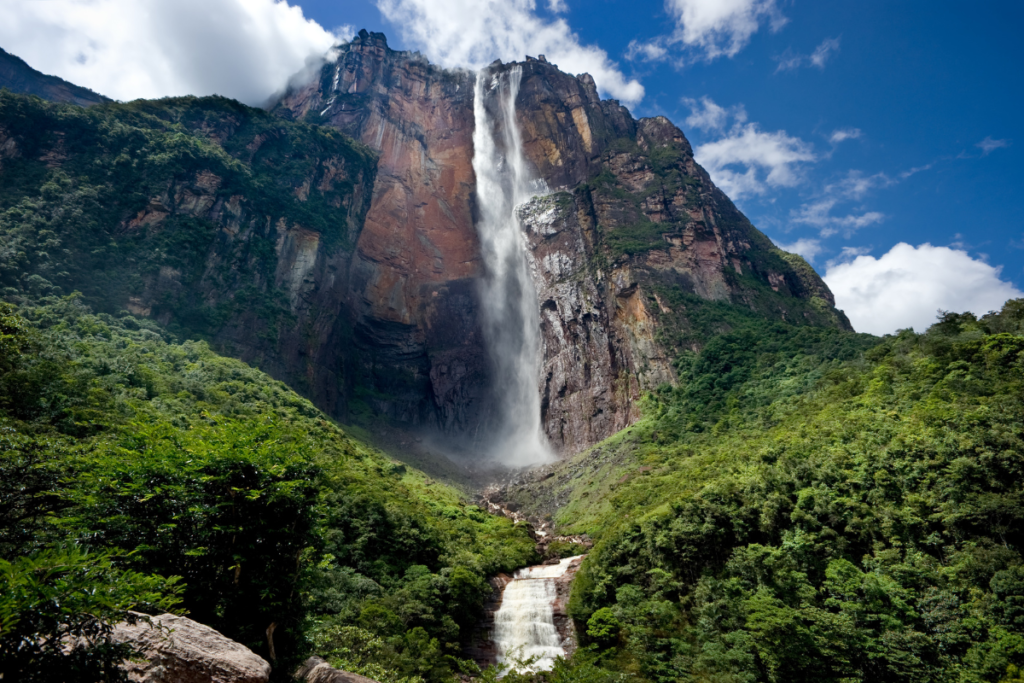
Number 6. Angel Falls.
Angel Falls, located in the Canaima National Park in Venezuela, is the world’s highest uninterrupted waterfall, with a breathtaking drop of 979 meters (3,212 feet). Named after the American aviator Jimmy Angel, who first flew over the falls in 1933, this natural wonder is one of the most awe-inspiring sights in South America. The falls are situated in a remote and lush region of the Venezuelan jungle, making them accessible only by air or a challenging trek through the rainforest. The water cascades down from the Auyán-tepui mountain, flowing into the Kerep River below. The sheer height of the falls means that much of the water turns into mist before it even reaches the ground, creating a mystical and ethereal atmosphere. The surrounding Canaima National Park is a UNESCO World Heritage site, known for its unique table-top mountains (tepuis), diverse wildlife, and indigenous Pemon communities. Angel Falls is a testament to the untouched beauty of nature and a must-visit destination for those seeking adventure and wonder.

Number 5. The Dead Sea.
The Dead Sea, located at the lowest point on Earth’s surface, is a salt lake bordered by Jordan to the east and Israel and the West Bank to the west. Known for its extremely high salinity, the Dead Sea’s waters allow swimmers to float effortlessly on its surface. The mineral-rich mud and waters of the Dead Sea are renowned for their therapeutic properties, attracting visitors from around the world seeking natural spa treatments. The landscape surrounding the Dead Sea is equally captivating, with its stark desert beauty, rugged cliffs, and oasis-like springs. Despite its name, the Dead Sea is home to a variety of microorganisms adapted to its harsh conditions, and its shores support unique plant life. The historical and cultural significance of the region adds another layer of intrigue, with ancient biblical sites and archaeological treasures nearby. The Dead Sea is a natural wonder that offers a unique blend of relaxation, natural beauty, and historical exploration.
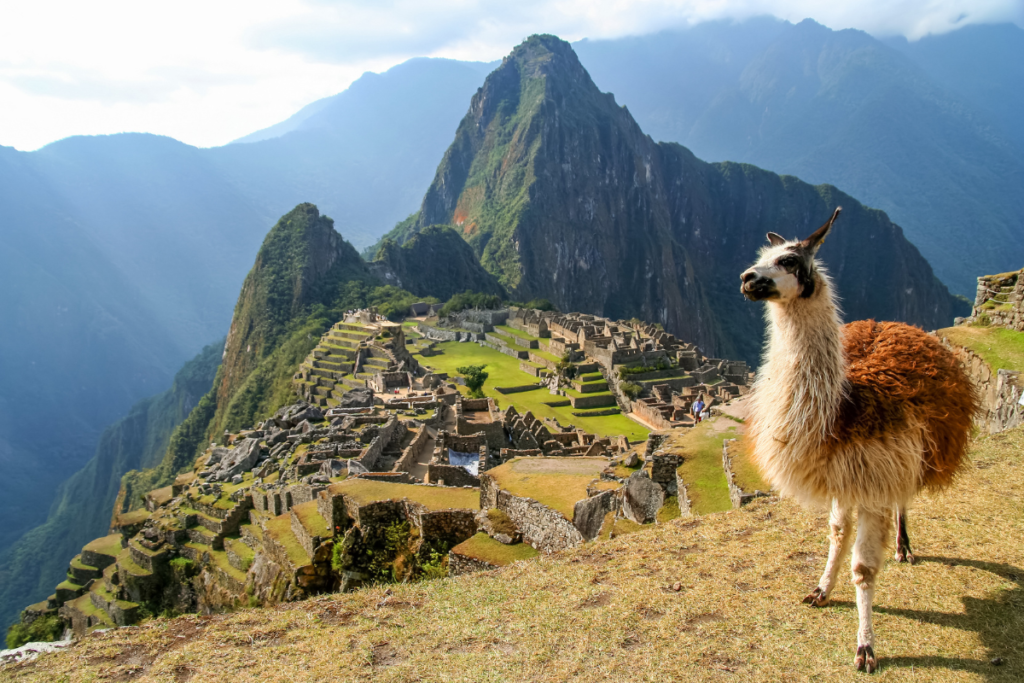
Number 4. Machu Picchu.
Machu Picchu, the ancient Inca citadel perched high in the Andes Mountains of Peru, is one of the most iconic and breathtaking archaeological sites in the world. Located at an altitude of 2,430 meters (7,970 feet) above sea level, this UNESCO World Heritage site is often referred to as the “Lost City of the Incas.” Built in the 15th century, Machu Picchu was abandoned during the Spanish Conquest and remained hidden from the outside world until its rediscovery by Hiram Bingham in 1911. The site features sophisticated dry-stone construction, with terraces, temples, palaces, and residential areas harmoniously integrated into the stunning natural landscape. The precise function of Machu Picchu remains a mystery, adding to its allure and mystique. Visitors can hike the famous Inca Trail, a challenging trek that offers breathtaking views and a sense of connection to the ancient past. Machu Picchu is not only a testament to the engineering and architectural prowess of the Inca civilization but also a spiritual and cultural symbol of Peru’s rich heritage.
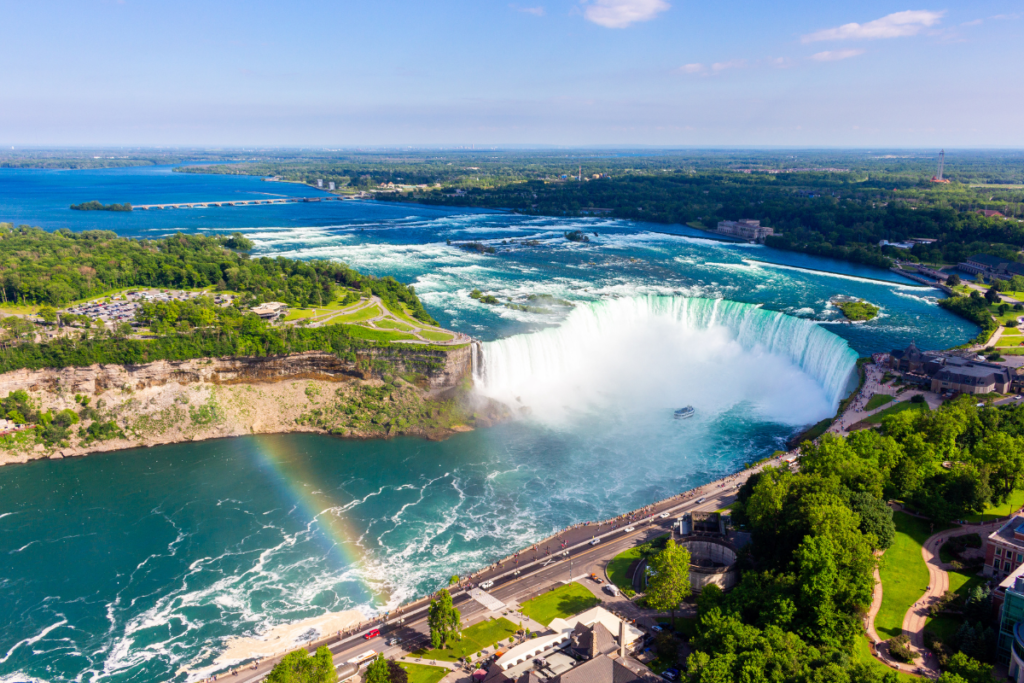
Number 3. Niagara Falls.
Niagara Falls, located on the border between the United States and Canada, is one of the most famous and visually stunning waterfalls in the world. Comprising three separate falls – Horseshoe Falls, American Falls, and Bridal Veil Falls – Niagara Falls has a combined average flow rate that makes it one of the most powerful waterfalls on the globe. The falls are a natural source of immense beauty and power, drawing millions of visitors each year who come to witness the thunderous water cascading over the cliffs. The Maid of the Mist boat tour and the Journey Behind the Falls experience offer up-close encounters with the falls, providing unforgettable perspectives of this natural wonder. Niagara Falls is not only a major tourist attraction but also a source of hydroelectric power, highlighting the balance between nature’s beauty and its utility. The surrounding area, including the Niagara Parks and the quaint town of Niagara-on-the-Lake, offers additional attractions, making Niagara Falls a must-visit destination for nature lovers and adventure seekers alike.
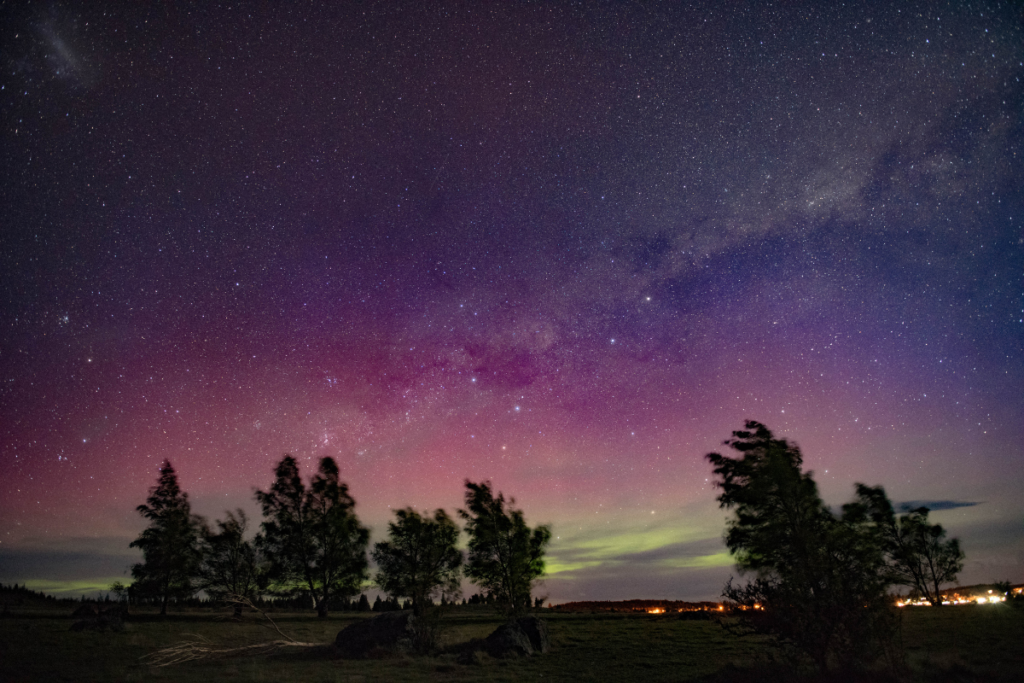
Number 2. Aurora Australis.
The Aurora Australis, also known as the Southern Lights, is a spectacular natural light display that occurs in the southern hemisphere. This phenomenon is the counterpart to the Aurora Borealis, or Northern Lights, and can be seen in the southernmost regions of the world, such as Antarctica, Tasmania, New Zealand, and southern parts of Australia and South America. The Aurora Australis is caused by the interaction of solar wind with the Earth’s magnetic field and atmosphere, resulting in mesmerizing displays of colorful lights that dance across the night sky. Shades of green, pink, and purple create a breathtaking visual spectacle that is both awe-inspiring and elusive. The best time to witness the Southern Lights is during the winter months in the southern hemisphere when the nights are longest and the skies are darkest. Observing the Aurora Australis is a once-in-a-lifetime experience that offers a unique glimpse into the natural wonders of the polar regions.
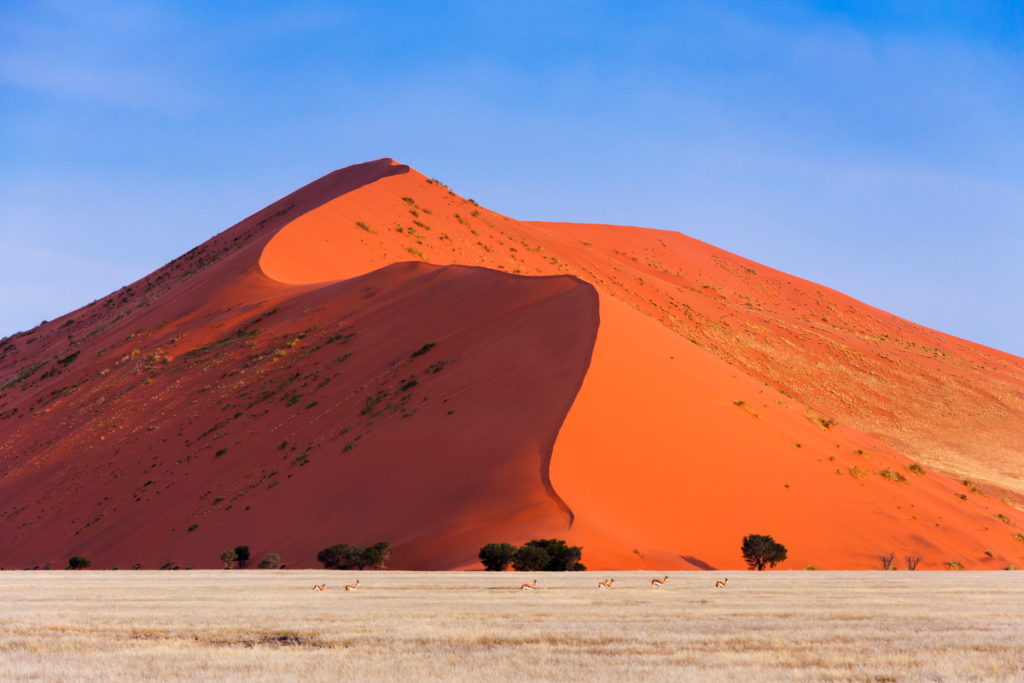
Number 1. Sossusvlei Dunes.
Sossusvlei, located in the Namib-Naukluft National Park in Namibia, is home to some of the highest and most spectacular sand dunes in the world. The dunes are known for their striking red-orange color, which is a result of the iron oxide content in the sand. This color contrasts beautifully with the bright white salt pans and the deep blue sky, creating a surreal and photogenic landscape. Sossusvlei is a salt and clay pan surrounded by these towering dunes, and it’s a popular destination for photographers, hikers, and nature enthusiasts. The best time to visit is at sunrise or sunset when the changing light casts dramatic shadows across the dunes, accentuating their curves and shapes. Nearby attractions include Deadvlei, a clay pan characterized by its dead acacia trees, and Big Daddy, one of the tallest dunes in the area. The stark beauty and tranquility of Sossusvlei make it a must-visit destination for those seeking to experience the unique landscapes of the Namib Desert.
